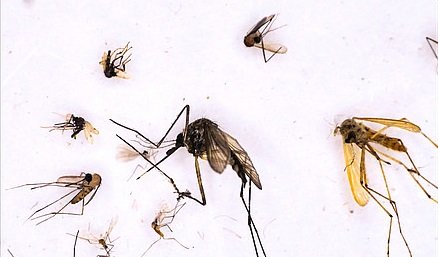 Read this article in French
Read this article in French- Share this article
- Subscribe to our newsletter
Biodiversity loss can encourage spread of viruses
How do changes in the environment, species extinction and the spread of pathogens relate to one another? The answer to this looks like a jigsaw puzzle. In cooperation with the Leibniz Institute for Zoo and Wildlife Research (Leibniz-IZW), researchers at Charité – University Medicine, both in Berlin, Germany, have now described one puzzle piece in the specialist journal “eLife”. They show that the destruction of tropical rainforests reduces mosquito species diversity. At the same time, resistant mosquito species – and hence also their viruses – are becoming more common. If there are many individuals of one mosquito species, their viruses can spread quickly.
The scientists at Charité and Leibniz-IZW looked at how the clearing of rainforests and the transformation of these areas into coffee or cocoa plantations and villages has impacted on the distribution and species diversity of mosquitos and their viruses. The survey, which thus combines the subject areas of virology and biodiversity research, was led by Professor Sandra Junglen, who heads the working group on “Ecology and Evolution of Arboviruses” at Charité’s Institut of Virology.
To conduct their research, the team of researchers first of all collected mosquitos in the Tai National Park region in Côte d’Ivoire. Here, there is a wide range of land use types – from primeval rainforest through secondary forest, cocoa and coffee plantations to villages. “We identified the mosquitos we caught and tested them for viruses,” explains Kyra Hermanns of Charité’s Institute of Virology, who is lead author of the publication. “Then we looked at how the composition of mosquito species varies depending on the type of land use, where certain viruses occur, and how frequent these are.”
Resistant mosquito species can hold their own
In a healthy ecosystem such as an intact rainforest, there are a large number of different viruses. This is above all because here, there is a high diversity of animals which are suitable carriers of the viruses – the so-called hosts. “If the ecosystem is transformed, this also affects the viruses,” Junglen explains. “We discovered 49 species of virus. We observed the greatest diversity of hosts and viruses in pristine and only slightly disturbed habitats.”
Most of the 49 species of virus occurred relatively rarely in the areas surveyed, the scientists report. However, nine virus species were frequently found in several habitats, with occurrence increasing in disturbed habitats and peaking in villages.
“This means that the clearing of tropical rainforests results in a decrease in mosquito species diversity and changes in the composition of host species. Some resistant mosquito varieties have strongly multiplied in clear-cut areas, and so have their viruses together with them,” explain Junglen and Professor Stephanie Kramer-Schadt of Leibniz-IZW, who conducted the association analyses of the mosquitos and the habitats.
So the composition of species communities has a direct impact on the occurrence of viruses. “If a host species is very common, this facilitates the spread of viruses,” Junglen further explains. All viruses which occurred more frequently were identified in a certain mosquito species. The viruses belong to different families and have different features.
“Thus, for the first time, we were able to demonstrate that the spread of viruses does not result from a close genetic relationship but from the properties of their hosts – in other words, in particular, of those mosquito species which can cope well with the changes in environmental conditions in disturbed habitats.”
New insights into the dynamics of infectious diseases
While the viruses which had been discovered only infected mosquitos and cannot, according to what is presently known, be transmitted to humans, they are nevertheless helpful as a model for understanding how changes in a community’s species diversity impact on the occurrence and frequency of viruses. “Our study shows how important biodiversity is and that a reduction in biodiversity promotes the occurrence of certain viruses because it encourages the spread of their hosts,” Junglen stresses.
“So far, such processes have almost exclusively been examined for individual pathogens and individual hosts. Now we are getting a more complete picture, enabling further research,” she explains.
(idw/wi)
Reference:
Hermanns, K., Marklewitz, M., Zirkel, F., Kopp, A., Kramer-Schadt, S., Junglen, S. (2023): Mosquito community composition shapes virus prevalence patterns along anthropogenic disturbance gradients. eLife 12: e66550. September 2023; DOI: 10.7554/eLife.66550





Add a comment
Be the First to Comment